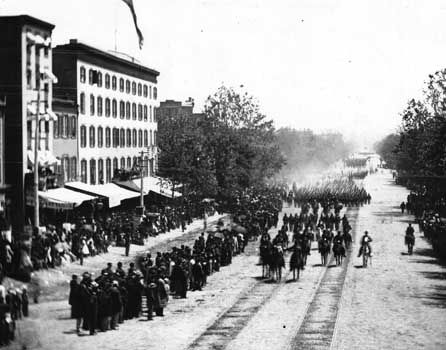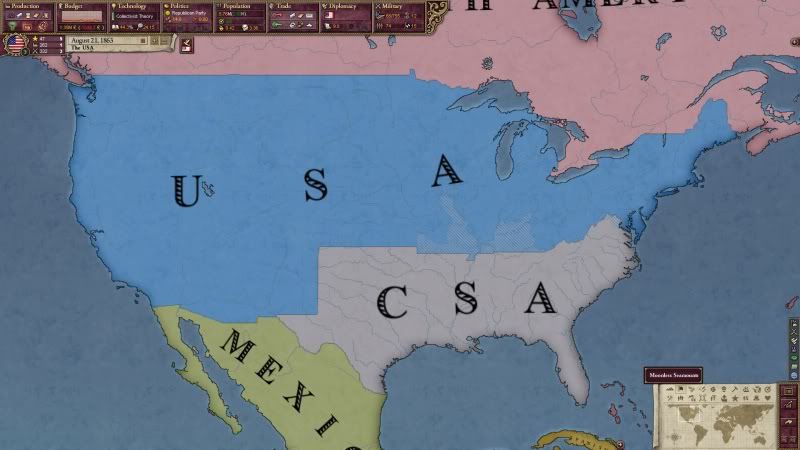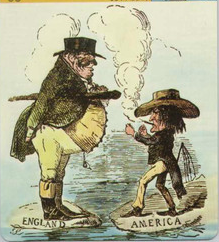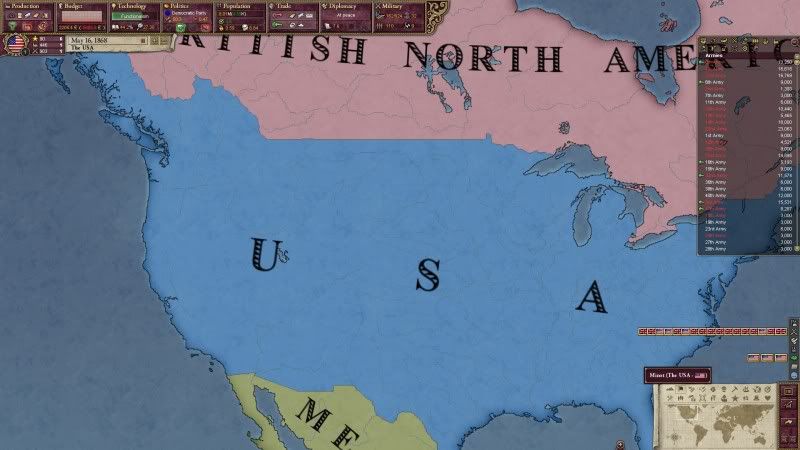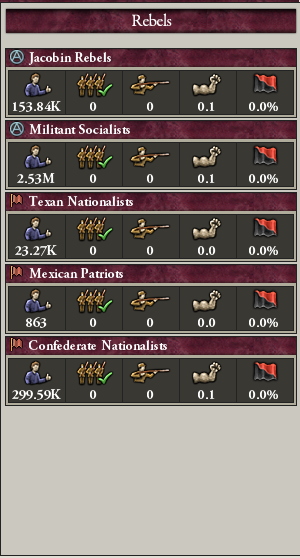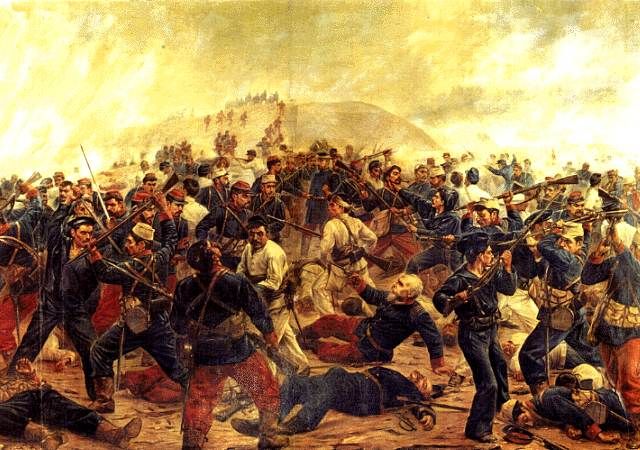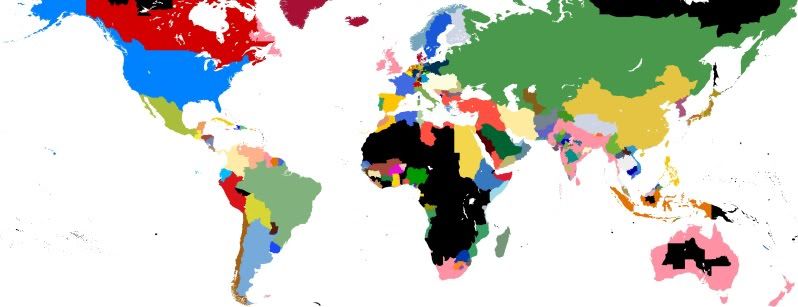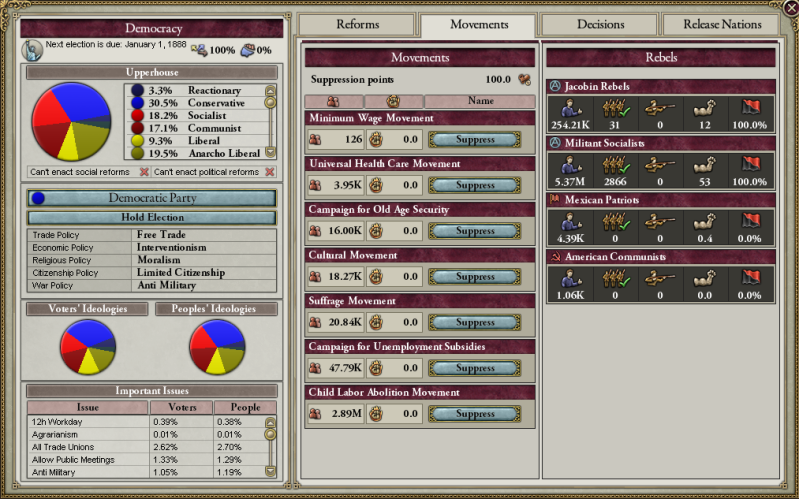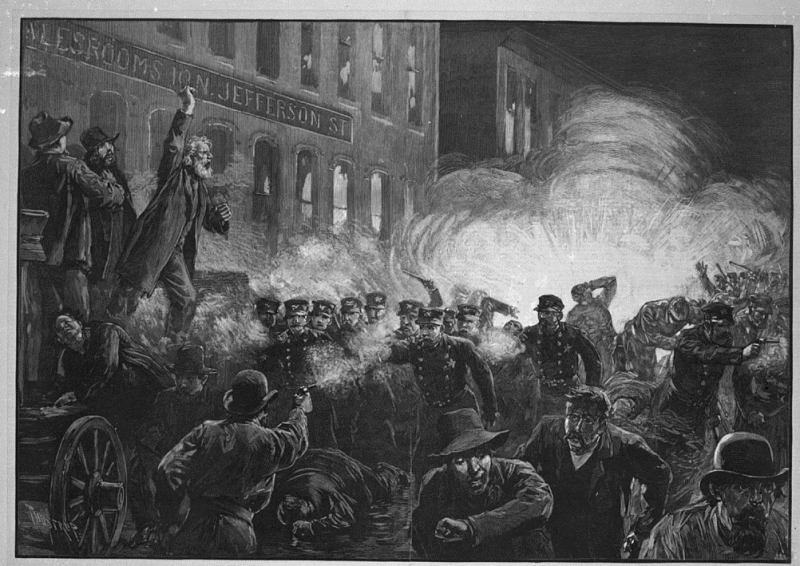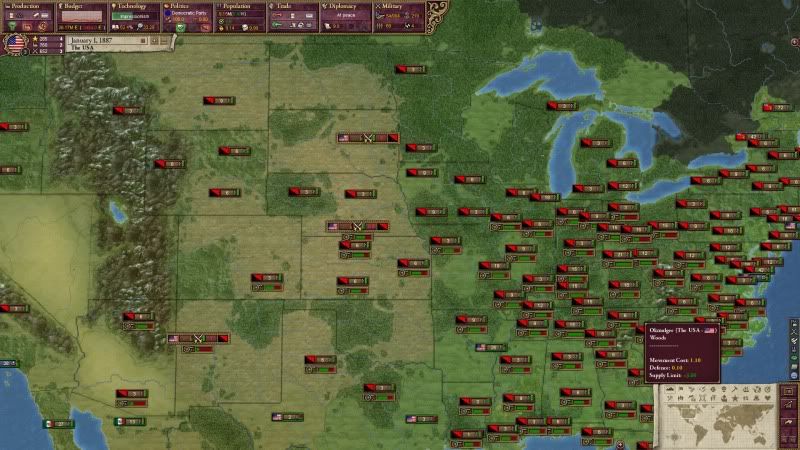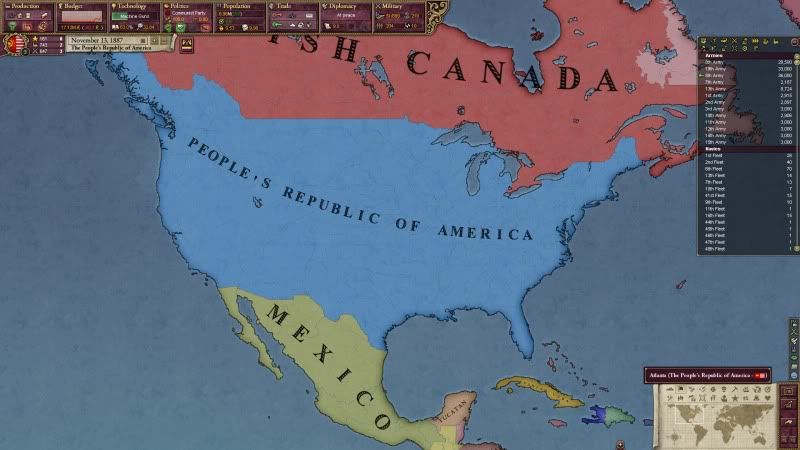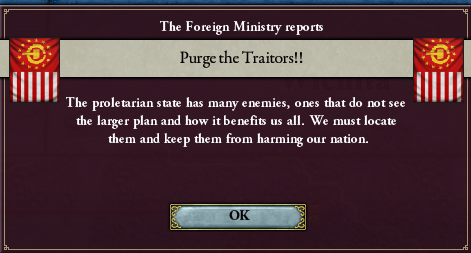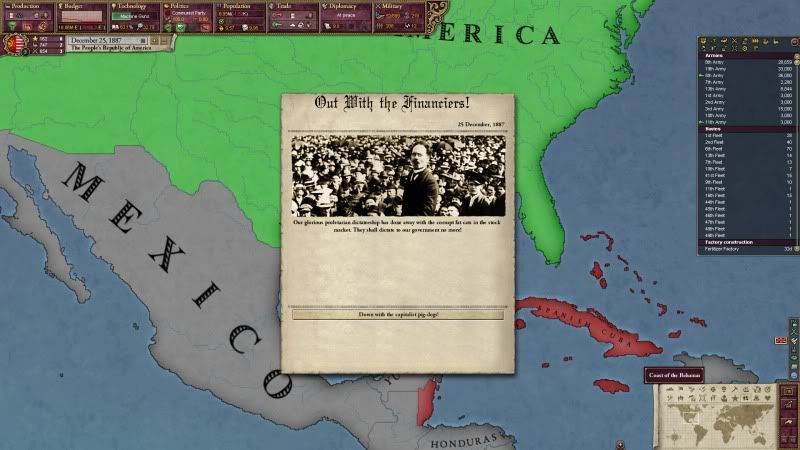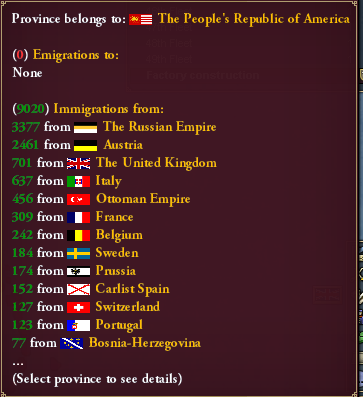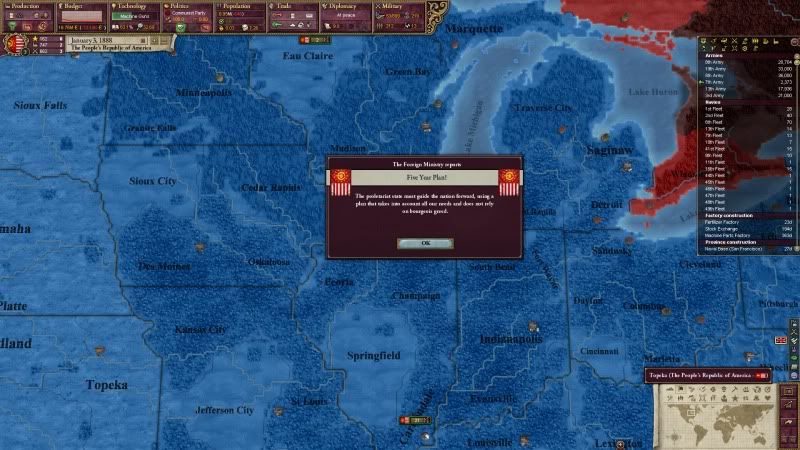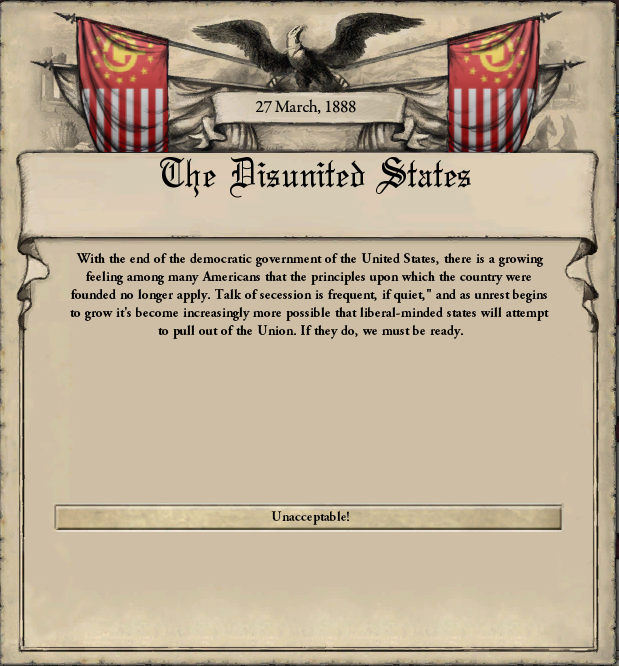New Beginnings: 1887-1890
The new communist government of the People’s Republic of America (PRA) did not waste any time reshaping the nation into what they viewed as a communist paradise. Almost immediately, they passed a series of social and political reforms that brought an end to the oppression the proletariat had faced for so long, and strengthen the Communist Party’s grip over the country.
Social and Political policies, November 1887
To keep that grip, the communists knew they would need to get their hands dirty, and did not shy away. Also on the same day they took office, the government began great purges of what they viewed as their enemy. Many were arrested and sent to labour camps, others were simply executed. The government attempted to keep this as quiet as possible, to prevent any type of dissent among the populace.
The great purges, 1887
By late December this program was well underway, and while most of it was kept under wraps, some was made more public. The stock market was brought down, further dismantling the Capitalist’s former regime.
The stock market brought down, 1887
America had always been known as the land of opportunity, receiving a constant influx of immigrants from Europe was what had helped make the nation as strong as it was. Many of the communists were immigrants themselves, particularly of German descent. Although the communists had implemented new law that would prevent anyone from leaving the PRA, they wanted to encourage immigrants to come to the PRA to live in the new communist paradise. They set a national focus to attract immigrants, which turned out to be largely successful. While immigration was not as high as it was in years past, the PRA still had a higher amount of immigrants than any other country in the world.
Immigration to the PRA, December 1887
These immigrants would help restructure the American economy, which the communists envisioned would become the strongest in the world. In years past the American economy had been #1, but the conflicts and revolutions of the past year had allowed the French to surpass them. To help achieve the communist’s goals, in early January 1888 they introduced “The Five Year Plan” which was a centralized, economic plan for the country. Dozens of factories began construction across the country, and many others were expanded.
The Five year plan, introduced in January 1888
By March of 1888, some Americans had felt that the PRA no longer represented the democratic ideals that the country was built on. As such, several movements calling for regional succession from the Union started up, which the communists took with great concern.
Separatist movements begin, March 1888
Diplomatically, the PRA found themselves in a risky situation. While the previous American government had never bothered to maintain great relationships with the great powers of Europe, relations were not hostile either (with Great Britain and Spain being exceptions). However, All of the great powers of Europe viewed the communist PRA as a serious threat to the status quo, and took a hostile approach to relations with the PRA. The PRA was aware of this and it was considered a great concern. The Army was to be expanded greatly to face any hostile actions the Europeans might take, as well as a boost to the Navy to keep Europeans from landing on their shores. The PRA saw Canada to the North as their greatest threat, as the British could easily launch an invasion from there. The PRA considered taking action first, launching an invasion on Canada and installing a puppet communist government there, which would kick the Europeans out of mainland North America for good. However, the military was in no shape for a fight with Great Britain, so those plans would have to wait. Instead, the military turned its eyes south to Mexico.
The Mexican – American war was still within living memory for many, and relations were never amiable since the war. The former Democrat government had managed to bring Mexico into their sphere, and while the relationship was not friendly, it was useful. When the communists took power, Mexico viewed the new PRA with great fear. Like the Europeans, they viewed it as a threat to everything Mexico stood for. To keep the PRA happy, they attempted to maintain good relations, but the communists had other plans. They feared that Mexico would align itself with the powers of Europe, and allow the Europeans to use Mexico as a base to launch an invasion into the heart of the PRA. The communists devised a plan to invade Mexico and to prop up a puppet communist government, to keep the Europeans out.
In early 1889, the Communists began running a series of propaganda campaigns which portrayed the Mexicans as a threat to the existence of the PRA, and by the summer of 1889 the army was in place and their plan was ready. On July 13th the Communists fabricated a claim that the Mexicans had fired on PRA soldiers near the border in southern Arizona, and on July 14th the PRA officially declared war on Mexico. Mexican resistance proved to be stronger than expected and for the first several months of the war, little progress was made. To continue economic recovery the PRA did not mobilize any reserves and relied entirely on the Military, which was still rather small. However, on November 30th of 1889 a new threat would leave the PRA no choice other than to mobilize. Ever since the communists took power a group of Jacobian rebels had been planning to restore democracy to America, and with the army distracted in Mexico, it was the perfect time to begin an uprising. The PRA quickly mobilized its reserves to face this new threat.
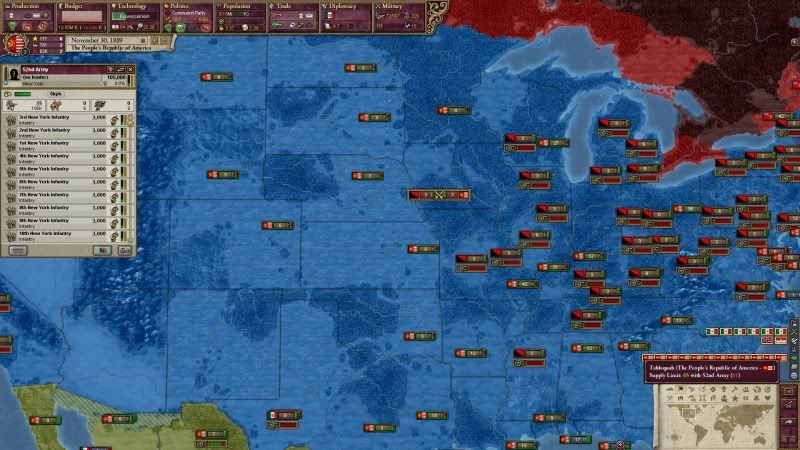
The Jacobian rebel situation, November 30th 1889
The Jacobians were no match for the vast pool of troops the communists mobilized, and by March 1890 the last of the rebels had been put down. About half of the mobilized troops were disbanded and returned to work, while the other half was used to speed up the army’s progress in Mexico. By the summer PRA troops had penetrated deep into Mexico, and had encircled over half of the Mexican Army at Monclova. On August 6th this army surrendered, with over eighty thousand dead, and over thirty thousand taken prisoner.
The Battle of Monclova, August 1890
By early September PRA troops were approaching Mexico City, and In October the PRA encircled another large Mexican army at Zacatecas, and took over 50,000 soldiers as prisoners. The Mexicans were defeated, and had no choice but to ask for peace to prevent further bloodshed. On October 18th 1890 the war was ended, with a new communist government taking power in Mexico.
The Battle of Zacatecas, October 1890
Mexico surrenders, October 18th 1890



